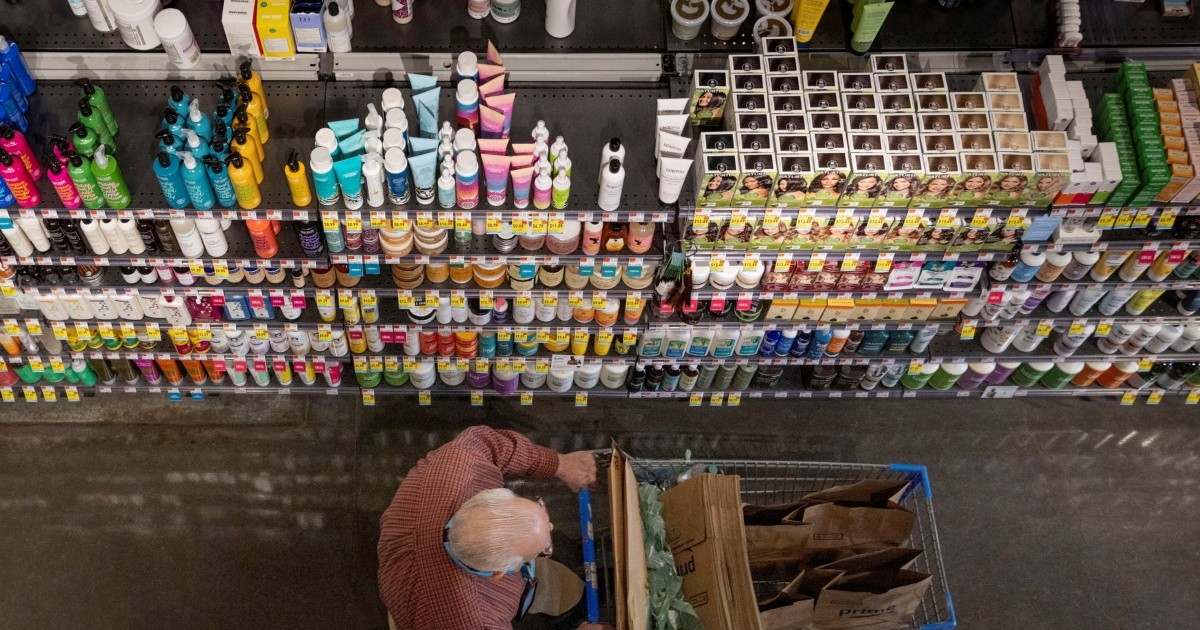The price increase moderated in the United States in April, according to the inflation index preferred by the Federal Reserve, the PCE published this Friday, although household spending continued to rise hand in hand with rising income.
Inflation in the last 12 months through April was 6.3%, compared to 6.6% in March, according to the Commerce Department’s PCE index. On a month-over-month basis, prices increased a modest 0.2% between March and April, compared to 0.9% between February and March.
This is good news for consumerswho saw their income rise 0.4% last month compared to March, and spent 0.9% more, a figure that -although positive- represents a smaller increase than that registered in the third month of the year.
The data shows that “consumers are resilient, for now,” summed up Rubeela Farooqi of High Frequency Economics.
The world’s largest economy has been punished for months by a inflation persistent, made even more painful by rising energy prices as a result of the Russian invasion of Ukraine.
Precisely, if the most volatile energy and food prices are excluded, the so-called “core” inflation marks 4.9% in 12 months.
The PCE is the measurement index of inflation preferred by the US central bank, which is advancing an aggressive policy of raising interest rates, in an attempt to moderate the rise in prices and direct it to its objective of 2% per year.
The process of raising rates began in March after years of ultra-low interest rates, close to zero, to sustain the economy during the pandemic. In May the Fed raised benchmark rates by half a percentage point, the biggest increase since 2000.
Household spending remains strong
US consumer spending rose more-than-expected in April as households bought more goods and services and rising inflation slowed, which could support second-quarter economic growth in the face of growing fears of a recession
The economic outlook Short-term gains were also helped by other Commerce Department data on Friday that showed the goods trade deficit narrowed sharply last month. A record trade deficit had caused production to contract in the first quarter.
“The economy it can always change bit by bit, but at this point in the business cycle, consumers are still spending what they have, keeping recessionary headwinds at bay,” said Christopher Rupkey, chief economist at FWDBONDS in New York.
Consumer spending, which accounts for more than two-thirds of US economic activity, rose 0.9% last month. March data was revised up to show an increase of 1.4% instead of 1.1% as previously reported.
Consumers bought more new vehicles, clothing, recreational items, as well as home furnishings and equipment. Demand for goods remains strong despite spending on services picking up. Consumers also dined out, traveled, and increased housing and utility expenses.
Economists polled by Reuters had forecast consumer spending rising 0.7 percent.
The spending has been backed by savings as well as strong wage gains. Companies have struggled to fill a record 11.5 million job openings since the end of March.
The Fed’s tightening monetary policy stance, as it struggles to quell high inflation and bring it back to its 2% target, has stoked fears of a recession, prompting a sell-off in stocks and rising in Treasury bond yields and the dollar.
The central bank has raised its policy interest rate by 75 basis points since March. The Fed is expected to raise the overnight rate by half a percentage point at each of its upcoming meetings in June and July.
trade gap
The growth estimates for the second quarter they are mostly above a 2.0 percent annualized rate. The economy contracted at a 1.5% pace in the January-March quarter, weighed down by a record trade deficit and slower inventory builds relative to the strong rate in the fourth quarter.
But trade it probably won’t drag down GDP this quarter. In a second report, the Commerce Department said the goods trade deficit fell 15.9% to $105.9 billion in April.
The adjustment reflected a 5.0% decrease in imports. While the drop in imports is good for GDP, it could be signaling a slowdown in consumer spending and business investment.
The data indicated that the imports of capital and consumer goods. Vehicle imports, however, increased. Merchandise exports increased 3.1%, driven by shipments of food products.
Although inflation persisted in April, the magnitude of the increases was less than in recent months. The personal consumption expenditures (PCE) price index rose 0.2%, the smallest advance since November 2020, after soaring 0.9% in March.
In the 12 months through April, the PCE price index advanced 6.3% after rising 6.6% in March.
The year-over-year rise in the PCE price index is slowing as last year’s big gains fall out of the calculation.
Excluding volatile food and energy components, the PCE price index gained 0.3%, rising by the same margin for three consecutive months. The so-called core PCE price index rose 4.9% year-on-year in April, the smallest gain since last December, after rising 5.2% in March.
“We need to see monthly gains cool off more significantly before the Fed can pause,” said Jennifer Lee, senior economist at BMO Capital Markets in Toronto.
In a third data release Friday, the University of Michigan revealed that its consumer confidence index came in at 58.4 in May in its final reading, below surveyed analysts’ estimates of a reading of 59.1.
















